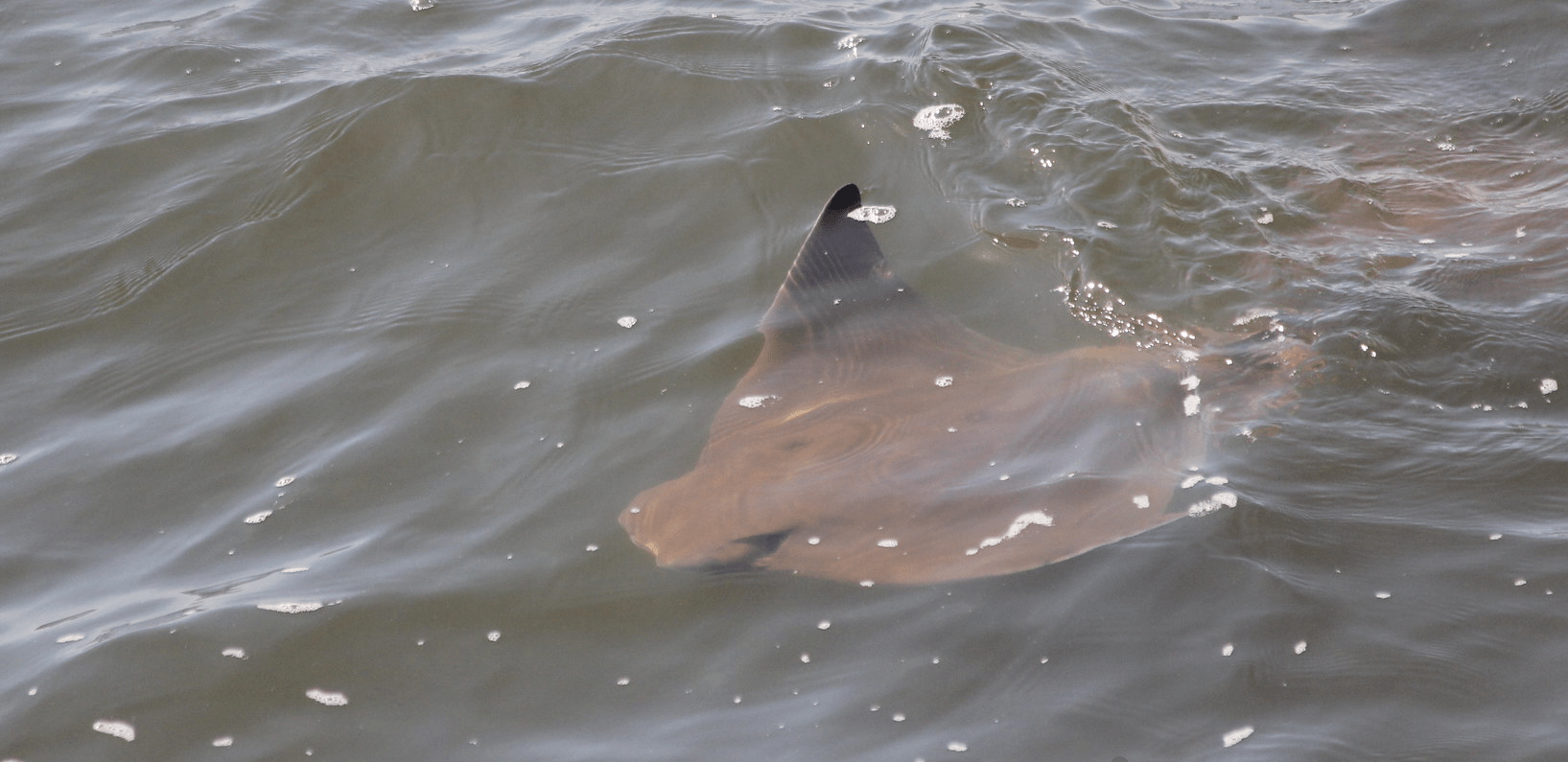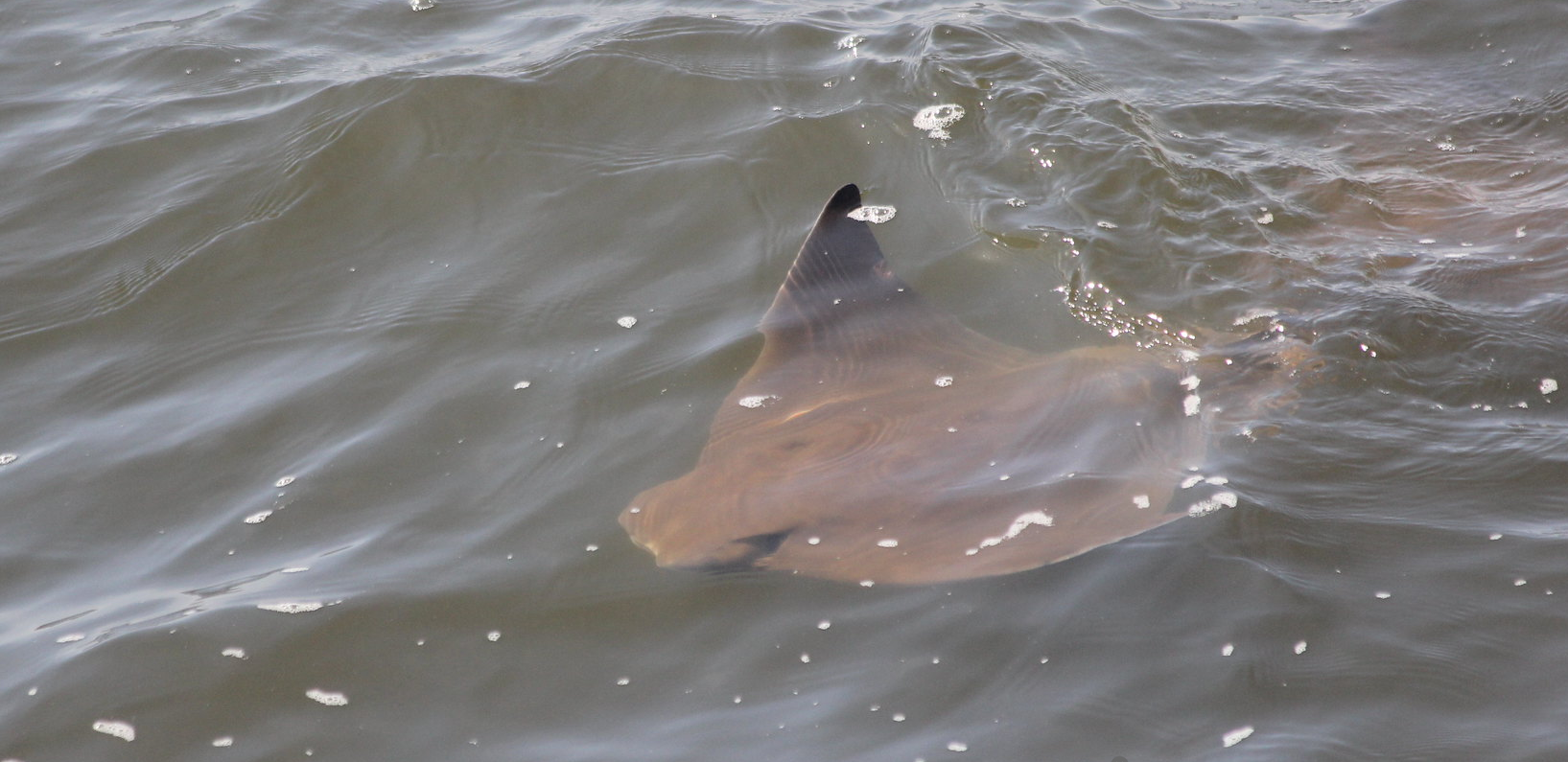The Cownose Ray

The Cownose Ray, Rhinoptera bonasus, gets its name from the shape of its forehead, which resembles the nose of a cow. The top of the ray is a brown color, and the bottom is white. Females are 3 feet in width, and males are 2-and-a-half feet in width. They have long whip-like tails with a barb at the bottom. The age of maturity for this ray is 5 years, and they can live up to 18 years old. They can weigh up to 50 pounds with a wingspan of 4 feet. Mating occurs every June and July. Females give birth to just one pup after an 11 month gestation period.
The Cownose Ray is a pelagic species that can also be found inshore. They migrate in large schools that can consist of up to a thousand rays. The rays are distributed in the Eastern Atlantic Ocean as well as the Western Atlantic Ocean from New England to Florida. They also migrate from the Gulf of Mexico to Venezuela and Brazil. They are native to the Chesapeake Bay, which is often used as a nursery ground.
The Cownose Ray rarely rests on the bottom of the ocean; it tends to swim near the surface of the water. This behavior is good for humans because it lowers the risk of them stepping on the venomous spine located behind the base of the dorsal fin. When swimming, the rays’ wingtips often break through the surface, resembling a shark’s dorsal fin. The Cownose Ray feeds on crabs, lobsters, and bivalves. To locate their prey, the ray uses electroreceptors on its nose along with its sense of smell and touch. Once they sense their prey, they move their pectorals to stir up the bottom and, at the same time, use a sucking motion with their mouth. Once their prey is in their mouth, they use their dental plates to crush up their prey. Bull sharks, sandbar sharks, and Cobia prey on Cownose Rays. The Cownose Ray is currently listed as vulnerable by the IUCN Red List due to extensive overfishing in the Caribbean.
The first time that I ever saw a school of Cownose Rays was this summer on the Cape May Whale Watch and Research Center. The school of rays swam right alongside the boat, close to the surface. Seeing the Cownose Rays was definitely one of the coolest things that I have ever experienced.
Check out our Facebook video of Cownose Rays from 7/22/21: https://www.facebook.com/252177704797287/videos/4418039144925165
-Isabella Moore, Intern at Cape May Whale Watch and Research Center
Stockton University ’22
References:
Cownose Ray. Chesapeake Bay Program. (n.d.). https://www.chesapeakebay.net/S=0/fieldguide/critter/cownose_ray.
https://www.floridamuseum.ufl.edu/discover-fish/species-profiles/rhinoptera-bonasus/

